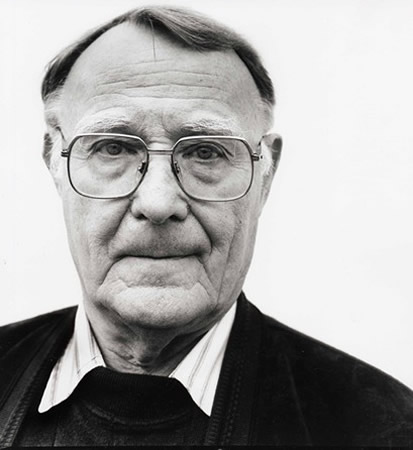
Forbes Ranking 11
Billionaire: Ingvar Kamprad
Wealth: $23.0 billion
Citizenship: Sweden
Residence: Switzerland
Source of Wealth: Ikea
Ingvar Feodor Kamprad; born 30 March 1926) is a Swedishbusiness magnate and the founder of IKEA, a retail (specialty) company. As of 2010, he is the eleventh wealthiest person in the world, according to Forbes magazine, with an estimated net worth of around US$23 billion in 2010.[3]
Biography
Early life
Ingvar Kamprad was born in Pjätteryd in Älmhult Municipality and grew up on a farm called Elmtaryd (now spelled Älmtaryd), near the small village of Agunnaryd in Ljungby Municipality in the province of Småland, Sweden.
He is a second generation German from Sweden, his grandfather moved to Sweden for a better life.
Career
Kamprad began to develop a business as a young boy, selling matches to neighbors from his bicycle. He found that he could buy matches in bulk very cheaply from Stockholm, sell them individually at a low price, and still make a good profit. From matches, he expanded to sellingfish, Christmas tree decorations, seeds, and later ballpoint pens and pencils. When Kamprad was 17, his father gave him a cash reward for succeeding in his studies.[4] He used this money to establish what has grown into IKEA.
The acronym IKEA is made up of the initials of his name (Ingvar Kamprad) plus those of Elmtaryd, the family farm where he was born, and the nearby village Agunnaryd.
Kamprad has lived in Epalinges, Switzerland since 1976. According to an interview with TSR, the French language Swiss TV broadcaster, Kamprad drives a 15 year old Volvo, flies only economy class, and encourages IKEA employees to always write on both sides of a paper.[5]In addition, Kamprad has been known to visit IKEA for a “cheap meal.” He is also known to buy Christmas paper and presents in post-Christmas sales. While Kamprad’s frugality is well documented, it is also an important part of the carefully managed image presented to IKEA employees and the general public. He less frequently mentions that he owns a villa in an upmarket part of Switzerland, a large country estate in Sweden, and a vineyard in Provence, France, or that he drove a Porsche for several years.[6][7][8]
Net worth
According to Swedish business weekly Veckans Affärer,[9] he is the wealthiest person in the world. This report is based on the assumption that Kamprad owns the entire company, an approach that both IKEA and the Kamprad family reject. Kamprad personally retains little ownership in the company, having transferred his interest to Stichting INGKA Foundation and INGKA Holding as part of a complex tax sheltering scheme that leaves his actual degree of control vague.[10]
As of March 2005, the sliding value of the United States dollar put Kamprad ahead as the richest person in the world in another report. In March 2010, Forbes magazine estimated his fortune at US$23 billion, making him the 11th richest person in the world.[1]
Stichting INGKA Foundation
The Dutch-registered Stitching INGKA Foundation is named after Kamprad, and owns INGKA Holding, the parent company for all IKEA stores. The charitable foundation wa reported by the business newspaper The Economist in May 2006 to be technically the world’s wealthiest charity – with an estimated value of at least US $36 billion in 2006 (larger than the Bill & Melinda Gates Foundation) – but it’s primary purpose is believed by some to be corporate tax-avoidance and anti-takeover protection for IKEA.[10] Kamprad is chairman of the foundation.
Works
While generally a private person, Kamprad has published a few notable works. He first detailed the IKEA concept of frugality and enthusiasm in a manifesto entitled A Testament of a Furniture Dealer. Written in 1976, it has since been considered the fundamental ideology of the IKEA furniture retail concept. He also worked with Swedish journalist Bertil Torekull on the book Leading by Design: The IKEA Story. In the autobiographical account, he further describes his philosophies and the trials and triumphs of the founding of IKEA.[11]
Nazi involvement
In 1994, the personal letters of the Swedish fascist activist Per Engdahl were made public after his death, and it was revealed that Kamprad had joined Engdahl’s pro-Nazi New Swedish Movement in 1942. Kamprad had raised funds for and recruited members to said group at least as late as September 1945. When Kamprad quit the group is unknown, but he remained a friend of Engdahl until the early 1950s.[12]Kamprad devotes two chapters to his time in Nysvenska Rörelsen in his book, Leading By Design: The IKEA Story and, in a 1994 letter to IKEA employees, called his affiliation with the organization the “greatest mistake of his life.” [13]
References
- ^ a b “Kamprad topic page at Forbes.com”. Forbes. Retrieved April 2010.
- ^ [1]
- ^ Kamprad topic page at Forbes.com Forbes.com. Accessed April 2010.
- ^ Ingvar Kamprad: IKEA Founder and One of the World’s Richest People (About.com Entrepreneurs)
- ^ “Cheap is good, says furniture magnate” NZZ Online, March 27, 2006
- ^ Ikea-Kamprads lyxvillor, Expressen, August 22, 2004
- ^ Folkhemsmöbleraren 80 år, Dagens Industri, March 29, 2006
- ^ Lyxhusen som Kamprad vill tala tyst om, Dagens Nyheter, August 19, 2004
- ^ “Who’s really the world’s richest?” CNNMoney.com, April 6, 2004
- ^ a b “IKEA: Flat-pack accounting”. The Economist. Retrieved 2007-01-02.
- ^ Kamprad, Ingvar and Torekull, Bertil Leading By Design: The IKEA Story Harper Collins, Sept.1, 1999. ISBN 978-0-06-662038-1
- ^ Nilsson, Karl N. Alvar Svensk överklass och högerextremism under 1900-talet ISBN 91-86474-34-0 pp. 155-156
- ^ “Ingvar Kamprad – IKEA Founder and One of the World’s Richest Men”.
love to work with your organisation,am from Africa